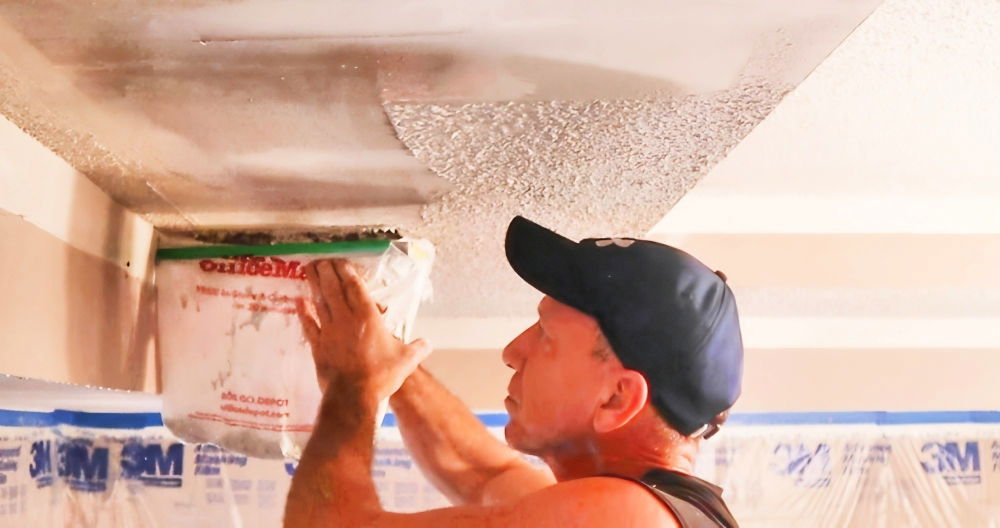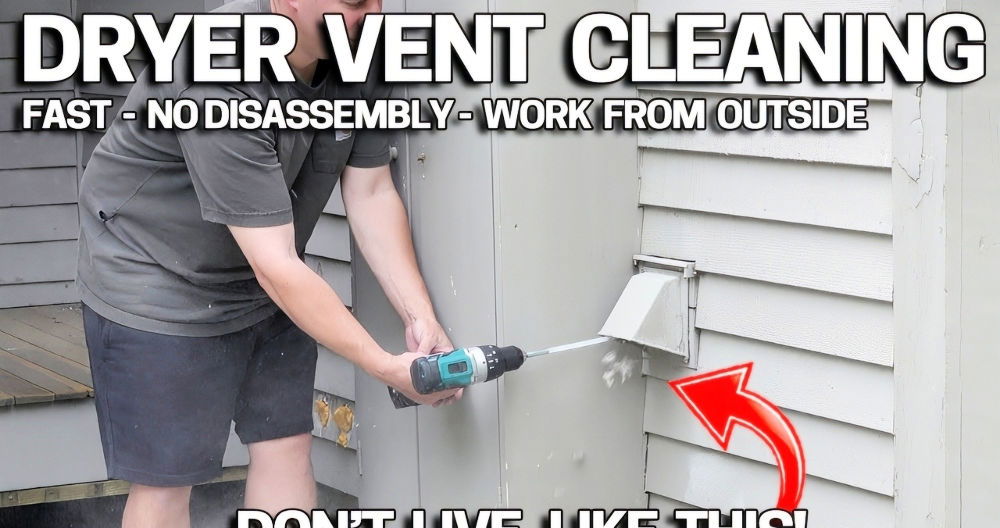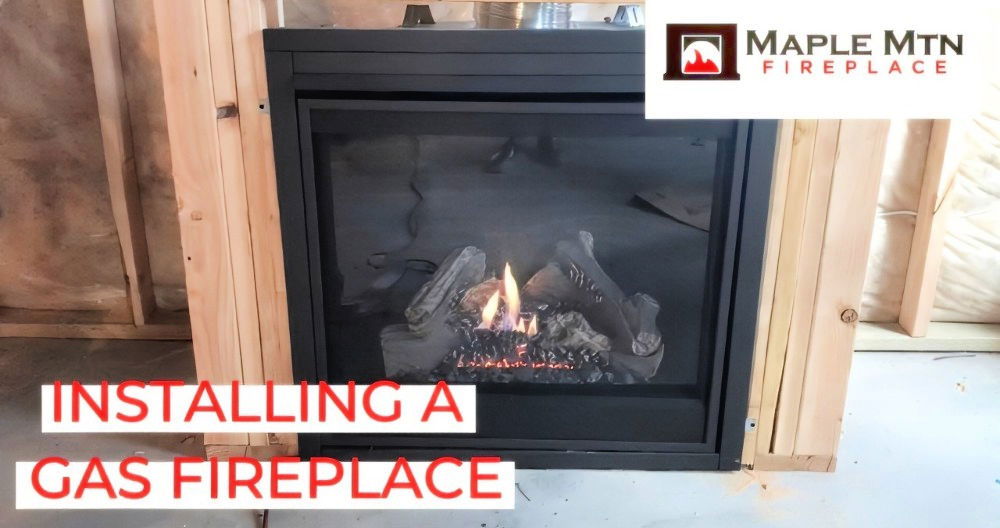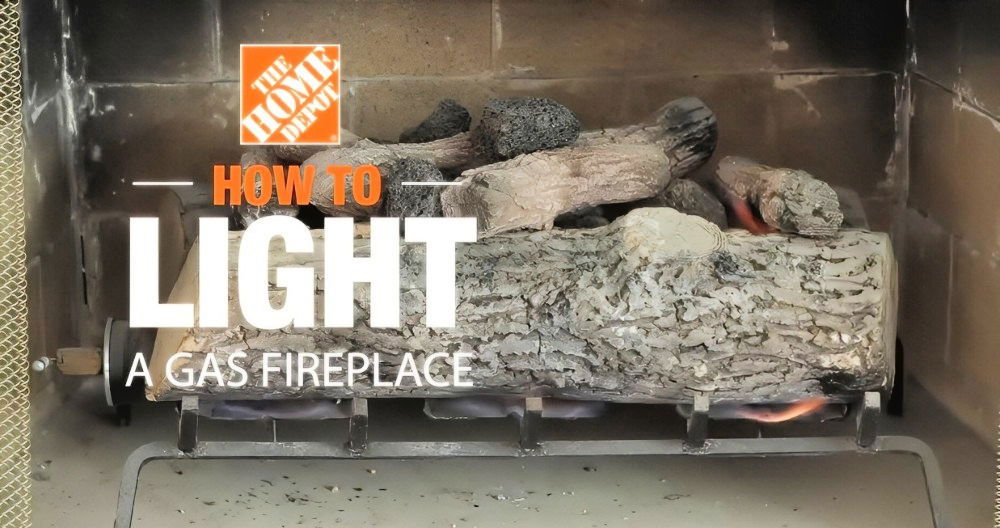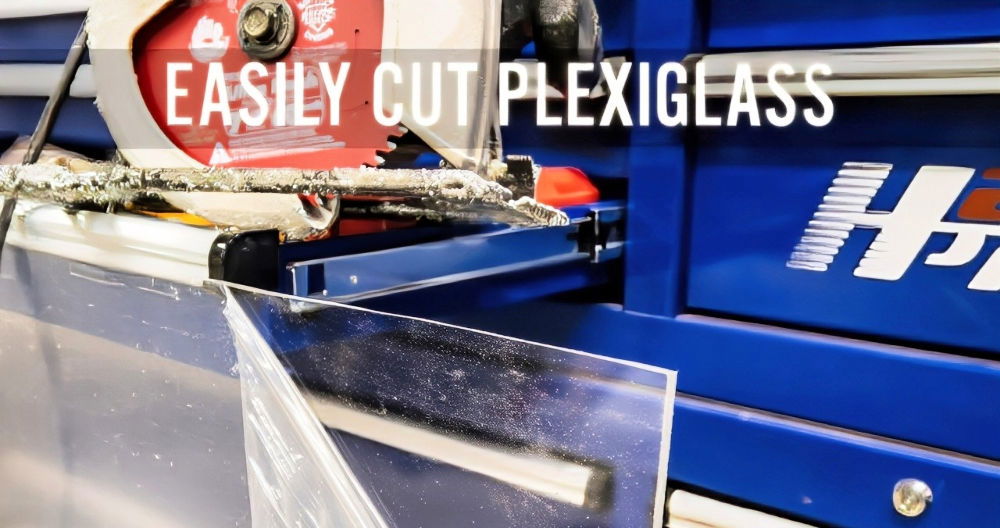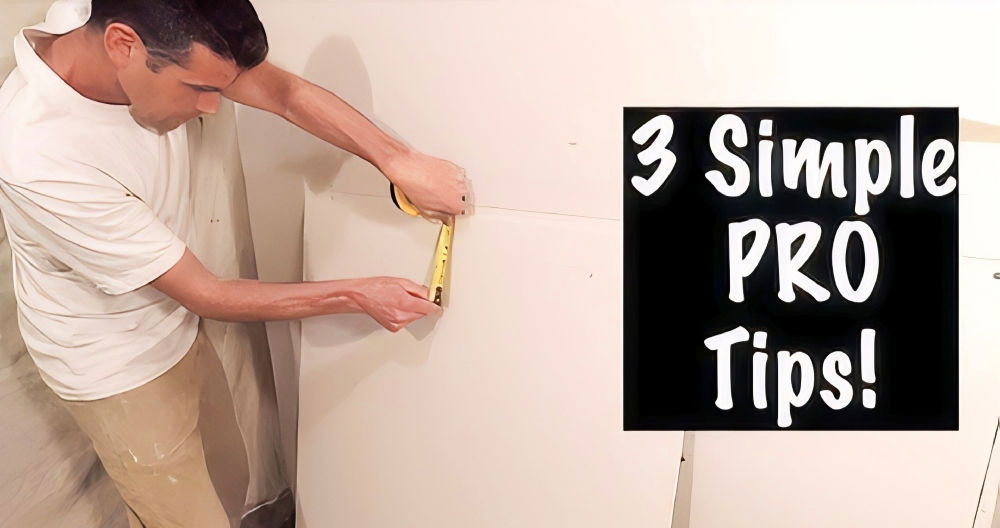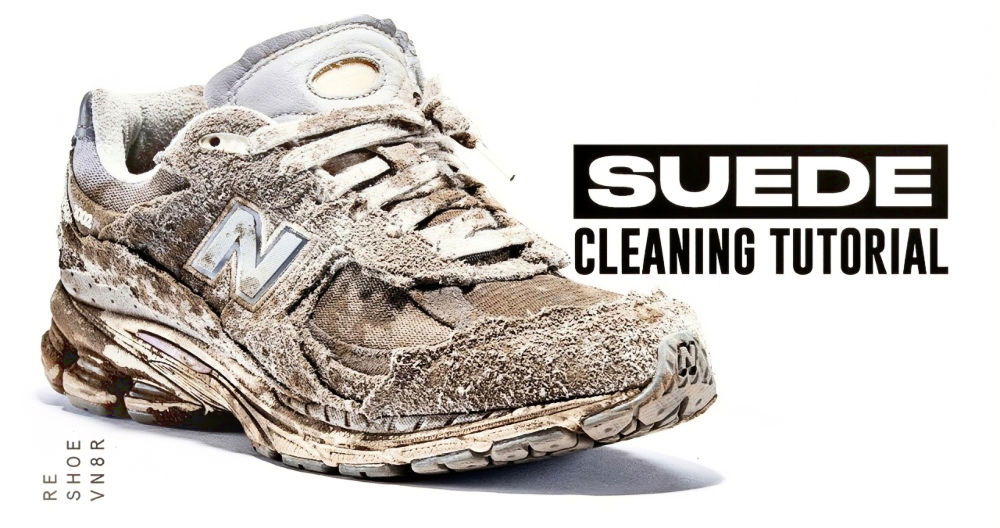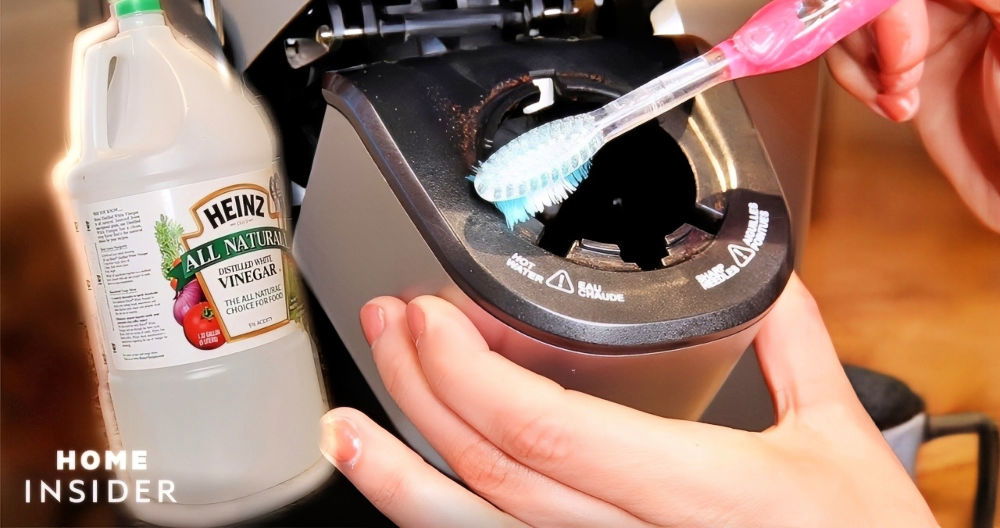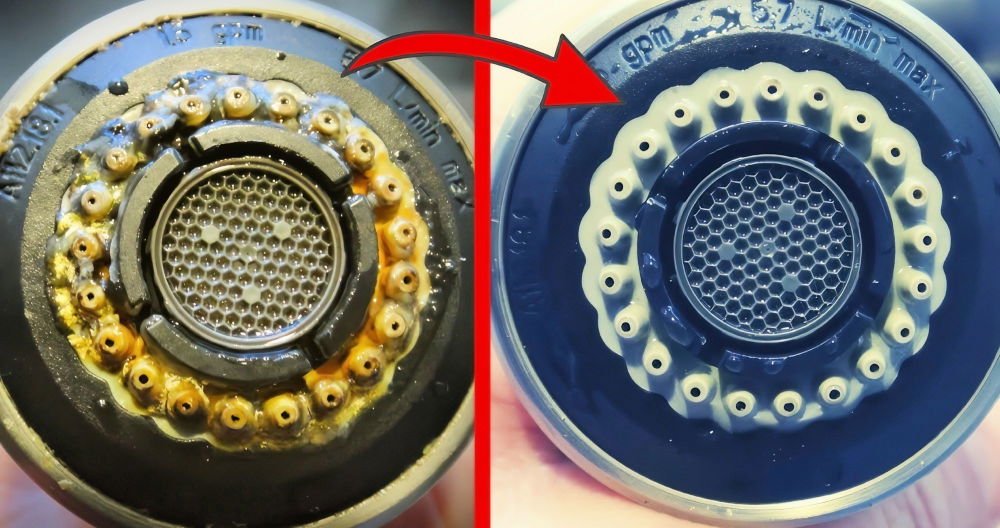Maintaining your gas fireplace is essential to ensure it operates efficiently and safely. Contrary to the popular belief that gas fireplaces are maintenance-free, they do require regular cleaning and upkeep, ideally on an annual basis. Below, we'll provide a step-by-step guide to cleaning your gas fireplace, ensuring it remains in excellent working condition.
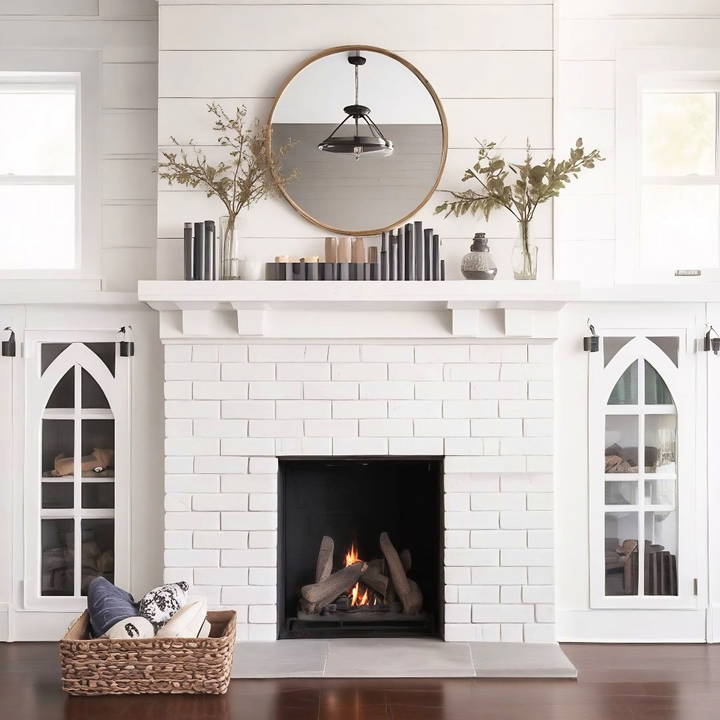
Why Regular Cleaning Matters
Regular cleaning of your gas fireplace isn't just about aesthetics—it's a critical part of ensuring safety and prolonging the lifespan of the unit. Dust, soot, and debris can accumulate, affecting performance and potentially causing safety hazards. By cleaning your fireplace, you can prevent malfunctions and maintain optimal heating efficiency.
Tools and Materials You'll Need
Before you get started, gather the following tools and materials:
- A vacuum with a hose attachment
- Soft cloths or microfiber towels
- Glass cleaner or specialized fireplace glass cleaner
- Canned air or compressed air
- Razor blade (for stubborn buildup on glass)
- Screwdriver (if required for disassembly)
- Water and a towel (for cleaning lava rocks)
Step by Step Instructions
Learn how to clean a gas fireplace with easy step-by-step instructions, from inspection to reassembly and maintenance tips for efficiency.
Step 1: Inspect Your Fireplace
Before diving into the cleaning process, inspect your fireplace for the following:
- Logs: Ensure they are intact, properly positioned, and free from dust or debris.
- Glass Panel: Check for cracks or loose fittings.
- Chimney and Exhaust Vent: Look for loose bricks or blockages that could impede airflow or venting.
- Outer Gasket: Examine the gasket for wear or damage, as this ensures a proper seal.
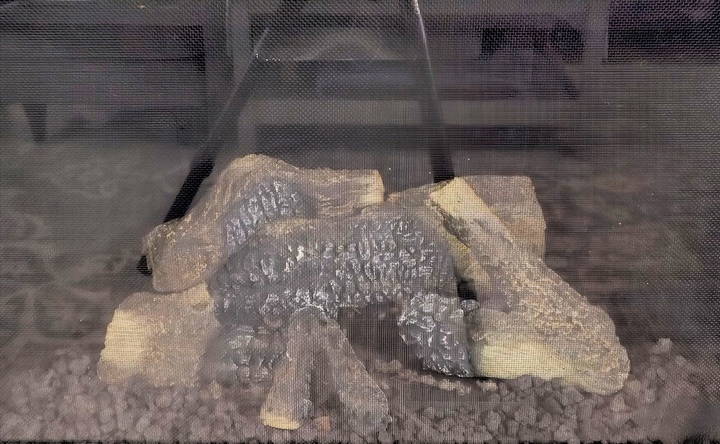
Address any major issues before proceeding with cleaning.
Step 2: Turn Off the Gas
Safety is paramount. Before cleaning, locate the gas supply valve and turn it off completely. This step eliminates the risk of accidental gas leaks or ignitions while working.
Step 3: Remove and Clean the Glass Panel
The glass panel protects the firebox and must be removed carefully. Follow these steps:
- Detach the Glass: Release the spring clips at the bottom first, followed by the top clips. Tilt the panel outward and lay it on a soft, clean surface.
- Clean the Glass: Use a regular glass cleaner or a specialized fireplace glass cleaner.
- For tough white buildup, gently scrape the surface with a razor blade.
- Inspect the Gasket: If the gasket attached to the glass is worn out, replace it before reassembling the panel.
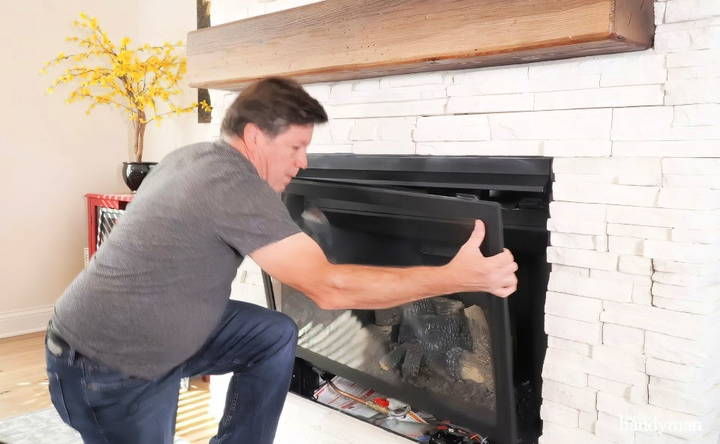
Step 4: Remove Logs and Lava Rocks
Take a photo of the logs and rocks in their original positions. This will help you reassemble them correctly later.
- Remove Logs: Some logs may be secured with screws, so use a screwdriver if necessary.
- Remove Lava Rocks: Place the rocks in a bowl or on a towel for cleaning.
- Clean Lava Rocks: Rinse them with water and allow them to dry completely.
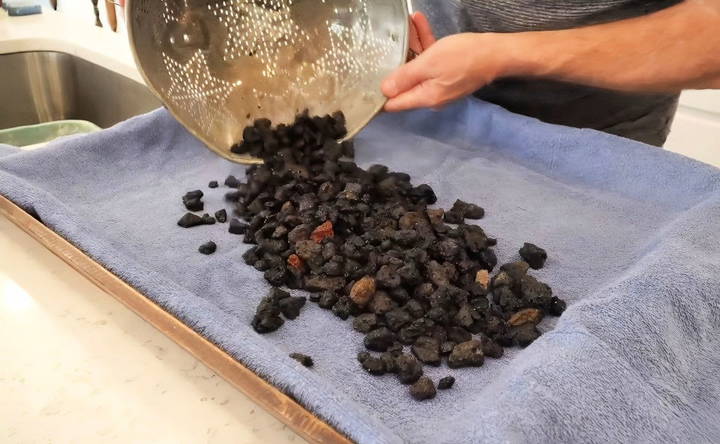
Step 5: Clean the Firebox and Burner
With the logs and rocks removed, you can clean the firebox and burner:
- Dust the Logs: Use canned air or compressed air to blow dust off the logs. Avoid using water on the logs, as it can damage their material.
- Vacuum the Firebox: Use a vacuum with a hose attachment to remove dust and debris from the firebox.
- Clean the Burner: Use canned air to blow away any debris blocking the burner ports.
- Inspect the pilot light and burner for signs of wear or damage.
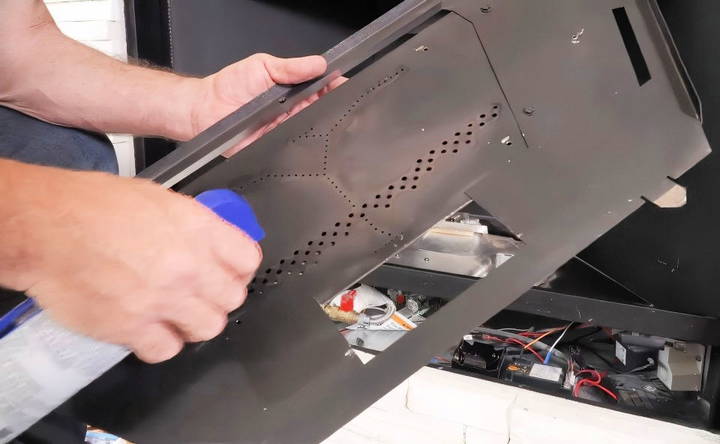
Step 6: Reassemble the Fireplace
Once all components are clean and dry, reassemble the fireplace in reverse order:
- Position the logs and lava rocks back according to your reference photo.
- Reattach the glass panel securely, starting with the top clips and finishing with the bottom ones.
Step 7: Test the Fireplace
After reassembling, turn the gas supply back on and test the fireplace:
- Light the pilot light and ensure it ignites smoothly.
- Check that the burner is operating evenly and efficiently.
- Confirm that no unusual sounds or odors are coming from the unit.
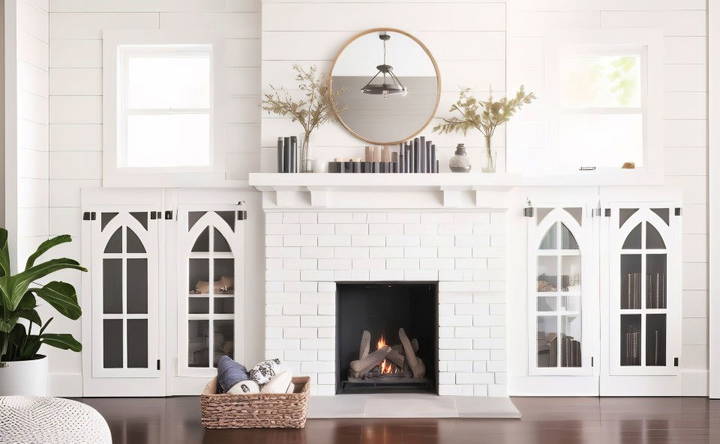
If anything seems off, consult a professional for further inspection.
Tips for Maintaining Your Gas Fireplace
- Schedule Annual Inspections: A professional inspection can catch issues you might miss during cleaning.
- Avoid Harsh Chemicals: Stick to recommended cleaners to prevent damage to glass or metal parts.
- Monitor for Damage: Regularly inspect the logs, glass, and gaskets for wear and tear.
- Keep the Area Clear: Ensure the area around the fireplace remains free of flammable materials and debris.
Conclusion:
Cleaning your gas fireplace might seem daunting, but with the right tools and steps, it's a manageable task. Regular maintenance ensures your fireplace remains safe, efficient, and attractive for years to come. By following this guide, you can enjoy the warmth and ambiance of your fireplace worry-free.
FAQs About Gas Fireplace Maintenance and Cleaning
Discover essential FAQs about gas fireplace maintenance and cleaning to ensure safety, efficiency, and a cozy ambiance in your home.
Avoid ammonia-based cleaners like standard window cleaners. These can leave residue that reacts with combustion byproducts or damage the protective coating on the glass. Use a cleaner specifically designed for fireplace glass for best results.
Start by lifting the top and bottom grill sections. Then release the spring clips at the bottom, followed by the top, and gently tilt the glass panel out.
Yes, it’s recommended to inspect and clean the chimney annually, even for gas fireplaces. This helps ensure there are no blockages or buildup that could impede airflow or pose a safety hazard.
Low flames can result from a blocked flue or burner issues. Ensure the burner ports are clean and free of debris. If the issue persists, consult a professional for inspection.
You can use a metal polish or a high-temperature black stove polish designed for fireplace components. Always follow the manufacturer’s recommendations.
Replace them with logs designed for your specific fireplace model. Consult your fireplace's user manual or a professional to ensure compatibility and safety.
Commonly missed steps include inspecting the outer gasket for damage and ensuring the flue is clear of blockages. Also, double-check the proper positioning of logs and rocks for optimal functionality.


